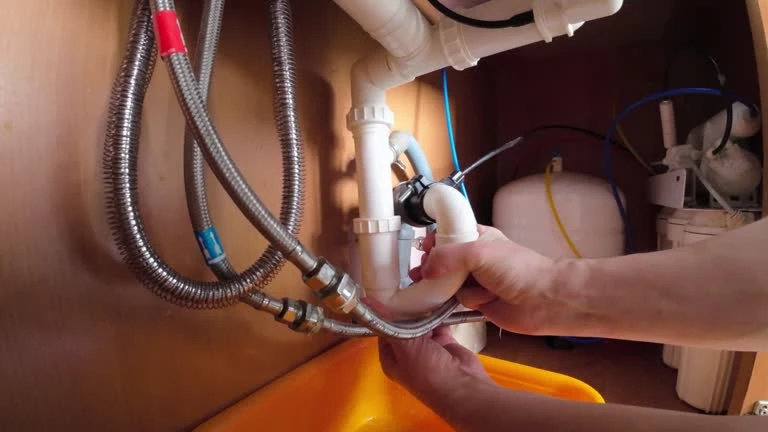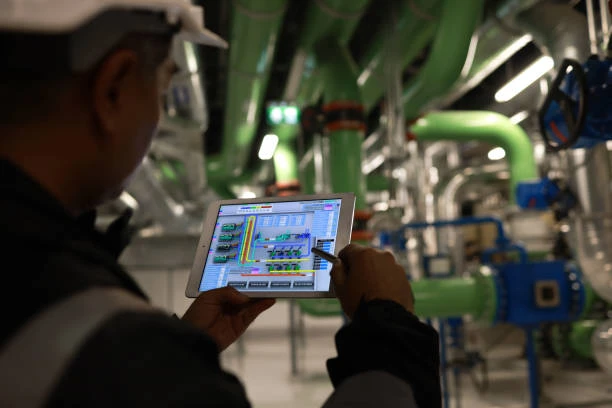Hydraulic control valves are essential components in hydraulic systems. They regulate the flow, pressure, and direction of fluid to ensure that the system functions effectively. These valves are responsible for managing power transmission in hydraulic circuits, making them critical for applications ranging from industrial machinery to construction equipment. This article will discuss the types of hydraulic control valves, their functions, and their importance in maintaining system efficiency and safety.
Understanding Hydraulic Control Valve
Hydraulic control valves regulate the flow of hydraulic fluid to different parts of a hydraulic system. They ensure that the system operates within the required pressure and flow conditions. Control valves are critical for controlling actuators, such as cylinders and motors, which convert hydraulic power into mechanical work. The correct valve selection is essential for achieving optimal performance, safety, and energy efficiency in the system. By adjusting fluid flow, control valves influence the movement speed, force, and direction of hydraulic actuators.
Types of Hydraulic Control Valve
There are several types of hydraulic control valves, each serving a different function. The main types include directional control valves, pressure control valves, flow control valves, and relief valves. Directional control valves direct the flow of fluid to different parts of the system, ensuring that hydraulic actuators function correctly. Pressure control valves regulate the system’s pressure to prevent damage caused by excessive pressure. Flow control valves manage the speed of fluid flow, while relief valves protect the system by releasing excess pressure.
Directional Control Valve
Directional control valves are used to control the path of hydraulic fluid in a circuit. These valves determine whether the fluid flows to the front or back of an actuator, controlling the direction of movement. Directional control valves are available in different configurations, such as 2-way, 3-way, or 4-way valves, depending on the complexity of the system. For example, a 3-way valve can control a single actuator’s movement, while a 4-way valve can manage the flow to two actuators. These valves are often operated by levers, solenoids, or pneumatic actuators, depending on the system’s requirements.
Pressure Control Valve
Pressure control valves are designed to regulate the pressure within a hydraulic system. These valves ensure that the system operates within a safe and efficient pressure range. If the pressure exceeds a preset limit, pressure control valves open to release fluid and reduce the pressure. Common types of pressure control valves include relief valves, pressure reducing valves, and sequence valves. Relief valves protect the system from overpressure situations, while pressure reducing valves lower the system pressure to match the needs of specific components. Sequence valves ensure that fluid pressure reaches certain levels before allowing other components to operate.
Flow Control Valves
Flow control valves regulate the rate at which hydraulic fluid flows through the system. These valves control the speed of hydraulic actuators, such as cylinders and motors, allowing operators to adjust movement speed as needed. Flow control valves can be either manual or automatic. Manual flow control valves are typically used for applications that require constant flow rates, while automatic flow control valves adjust flow rates based on changing system conditions. Some flow control valves include bypass features that allow fluid to bypass certain components to maintain constant flow rates.
Relief Valves
Relief valves are a type of pressure control valve designed to protect hydraulic systems from excessive pressure. When the pressure within the system exceeds a certain threshold, the relief valve opens to release fluid, thereby lowering the pressure. Relief valves are essential for preventing damage to components such as pumps, pipes, and actuators. These valves are commonly found in industrial systems where the risk of pressure surges is high. They come in different designs, such as spring-loaded relief valves, which use a spring to control the valve opening, and pilot-operated relief valves, which use a secondary pilot valve for finer control.
Importance of Hydraulic Control Valve
Hydraulic control valves are essential for the proper functioning of hydraulic systems. They regulate fluid flow, ensuring that actuators receive the correct amount of hydraulic power to perform their tasks. By controlling flow and pressure, these valves help optimize system efficiency, reduce energy consumption, and prevent component damage. Hydraulic control valves also contribute to safety by preventing overpressure and controlling the speed and direction of actuators. In industrial applications, these valves ensure that heavy machinery and equipment operate smoothly and safely, avoiding costly repairs and downtime.
Maintenance of Hydraulic Control Valve
Proper maintenance is crucial to ensure the longevity and efficiency of hydraulic control valves. Regular inspection and cleaning help prevent issues such as leaks, blockages, and malfunctioning valves. Operators should check the valve seals, springs, and actuators for wear and tear. The fluid in the system should also be regularly changed to prevent contamination, which can cause damage to the valves. It is also essential to check the valve settings periodically to ensure that they are properly calibrated. In some cases, it may be necessary to replace components like springs or seals to keep the valves in optimal condition.
Troubleshooting Hydraulic Control Valves
Troubleshooting hydraulic control valves involves identifying and resolving issues that affect system performance. Common problems with hydraulic control valves include leaks, slow or erratic valve response, and pressure fluctuations. Leaking valves may be caused by worn seals or damaged valve bodies. Slow valve response can result from contaminated fluid or faulty actuators. Pressure fluctuations may indicate a problem with the pressure setting or a malfunctioning pressure relief valve. Diagnosing and fixing these issues requires a systematic approach, including checking fluid levels, inspecting valve components, and testing valve functionality. Proper troubleshooting ensures that the system operates efficiently and safely.
Conclusion
Hydraulic control valves are critical components in hydraulic systems, ensuring that fluid flow, pressure, and direction are properly regulated. By understanding the types of valves and their functions, operators can optimize the performance and safety of their systems. Directional control valves, pressure control valves, flow control valves, and relief valves all play unique roles in maintaining hydraulic system efficiency. Regular maintenance and troubleshooting help ensure that these valves function correctly, preventing costly failures and improving system reliability. Proper selection, installation, and care of hydraulic control valves are essential for keeping hydraulic systems running smoothly.
IFAN Products international standards
IFAN products strictly adhere to a comprehensive range of international standards, encompassing ISO 15874, EN 15874, ASTM F2389, DIN 8077/8078, GB/T 18742, NBR 15884, ISO 15494, EN ISO 15494, GB/T 19472, NBR 15494, ASTM 2846 (501), DIN 8079/8080 (502), ASTM F441/F441M SCH80 (503), DIN (504), DIN (505), GB/T 18993, AS/NZS 1477, CSA B137.6, NSF/ANSI 14, TIS 17-2532/1131-2535, BS 3505, BS 4346 (801), ASTM D1785 SCH40 (802), ASTM D1785 SCH80 (803), DIN (804), GB (805), GB (806), GB(901), DWV(902), ASTM D2665 (903), along with ASTM D2241, D2665, D2729, and F441/F441M series, ISO 1452, EN ISO 1452, DIN 8061/8062, GB/T 10002, AS/NZS 1477, JIS K6741, CSA B137.3, and other national and industry norms.
Connect
IFAN is a Chinese manufacturer of plastic pipes, fittings and valves with 30 years of experience. If you are interest in IFAN copper fittings, copper valves, plastic pipes and fittings, please contact us. IFAN offers you a variety of standard pipes to meet your specific needs. Click below to learn more about IFAN’s wide range of affordable and cost-effective valve products and piping system related products.
We will reply your email or fax within 24 hours.
You can call us at any time if there is any question on our production.
For more information,pls visit our webside https://waterpipefitting.com/
Pls Mailto: [email protected]
Whatsapp: +8615088288323














Recent Comments